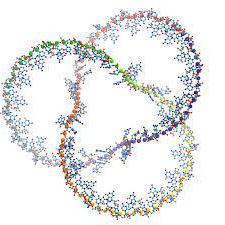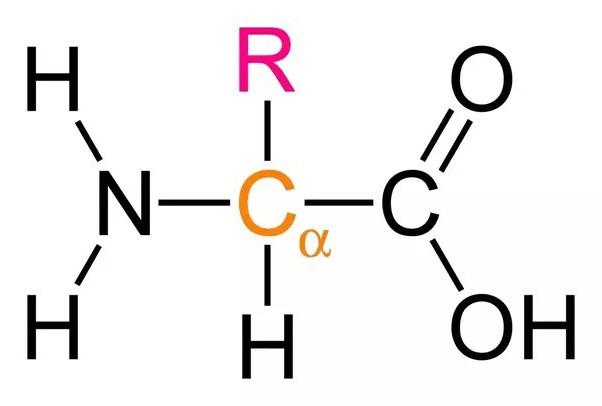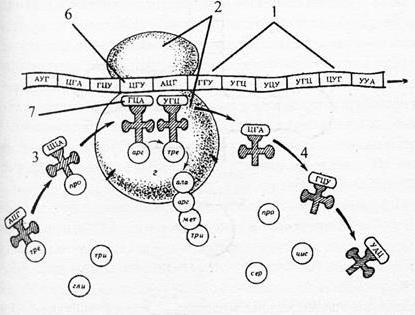Broadcasting in biology is a phased protein synthesis
This article will discuss the vitalall cells of the phenomenon. Briefly, the translation in biology is presented in the form of protein synthesis. Here we will look at its stages, their flow patterns and much more.
Introduction to the concept of translation in biology. What it is?
So. Processes of protein synthesis with the help of amino acids, used as a building material, on the matrices of information ribonucleic acids (mRNA, mRNA) is called translation in biology. This phenomenon occupies one of the key places in the development of all living organisms. Since proteins are the most important organic compounds among the known lipids, carbohydrates, nucleic acids. The process of translation is carried out with the participation of the ribosome, it plays a major role in the synthesis.

The principle of the mechanism
What is the translation of biology? This, in the first place, is the basic process of cellular life activity. To implement it, the cell requires the presence of an organelle of a non-membrane type called ribosomes. Ribosomes are called ribonucleoprotein structures, consisting of small and large subunits, each one by one. The ribosome deals with the recognition of codons consisting of three letters of mRNA. Further there is a comparison with anticodon complementary transfer ribonucleic acid, which carries a number of amino acids and combines them with increasing protein molecule, its chain. Moving along the matrix RNA, the ribosomes are involved in protein synthesis, information about which is embedded in the matrix RNA itself.

Broadcast in biology is a vitala process in which the recognition of cellular amino acids is carried out with the help of "adapters". They are transport-type RNA molecules. The process of combining amino acids with transport RNA has the character of an energy-dependent, enzymatic, aminoacyl-tRNA reaction.

Now, knowing where the translation is going on inbiology, namely on the matrix, we will consider this mechanism in eukaryotes and prokaryotes. It is important to know that this phenomenon is extremely different in these super-kingdoms. Many substances that suppress translation in organisms of the prokaryotic type, much less influence the same process in multicellular organisms, which makes it possible to exploit them in the science of medicine. In the translation, the stages of initiation, elongation and termination are distinguished.

There is an understanding of the reading frame. Its essence lies in the fact that the presence in the codon of three nucleotides, creates the possibility of a different way of reading the text of a genetic nature. There are three variants of its reading, each of which begins with the 1st, 2nd or 3rd nucleotide. Most often, one frame is important, but there are also interesting exceptions. It follows that the positioning of the ribosome at its starting stage will be very important.
The process of initiation
Protein synthesis, most often, originates fromAUG codons that deal with the encoding of methionine. Such a codon is called initiators. Translational initiation should be recognized by the ribosome and involve the aminoacyl transport RNA. And also an important point in the initiation process is the presence of some nucleotide sequences in the region of the initial codon. The presence of an initial AUG sequence is vital, since otherwise the synthesis would proceed in a chaotic manner.
The initiation can not take place without participationfactors of initiation, special protein molecules. The mechanism of translational initiation in eu- and prokaryotes is also different in that ribosomes of prokaryotic organisms can determine the location of the starting AUG and begin initiation in any part of the matrix RNA. Eukaryotic ribosomes, as a rule, are connected with the matrix RNA in the cap region and begin scanning, which is aimed at finding the start codons.
Introduction to Elongation
Translation in biology is a step-by-step process, part of which we have already considered in the point about initiation. Now consider the elongation.
The chain process of the polypeptide typeis carried out with the participation of two factors of elongation, protein molecules. The first factor is the delivery of aminoacylated transport RNA to the A site of the ribosome. In eukaryotes, EF1a does this, and in prokaryotes EF-Tu. Ribosome falls catalyst for peptide transport from transfer-RNA in P and A sites that are formed by peptide bonds by reaction with the amino acid residues. This causes the growth of the peptide chain due to amino residues. Then another protein enters the process, the role of which is to catalyze translocation. EF2 - eukaryotes, EF-G - prokaryotes. The translocation is referred to as the phenomenon of ribosome transfer along the matrix RNA per triplet. At the end of this path, the ribosome is again able to begin the elongation cycle.
Final stages of synthesis
In biology, translation is not only the stagesinitiation and elongation, but also termination. Which is the final stage of protein synthesis. It proceeds on the ribosomal A-site, and for this it is necessary to have one of the stop codons: UAA, UAG, UGA. In this case, the transport RNA peptidyl continues to be bound to the P-site. At this point, the RF 1 and 2 proteins, which act as catalysts for the cleavage of the polypeptide chain from the template RNA, enter the "game". Also there is RF 3. It causes the dissociation of the matrix RNA from the ribosomes. Termination proceeds more qualitatively with a stop codon uaa.

Summing up
Translation in Biology (Cossacks - sometimes you canto meet this name in search, which is connected with the numerous searches of people from the CIS countries) - is an extremely important process necessary for the synthesis of protein molecules. Without this process, the existence of life on the planet Earth would be impossible. Translation has a phased structure, uses a variety of proteins. Strongly differs between pro- and eukaryotes.





